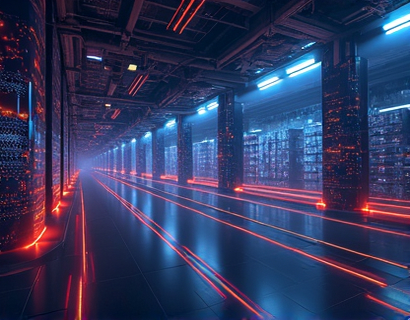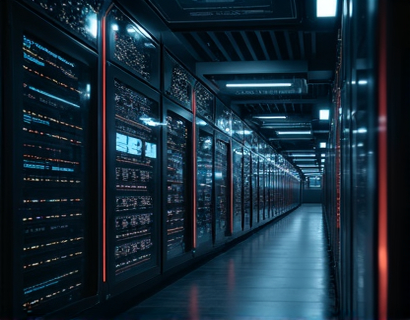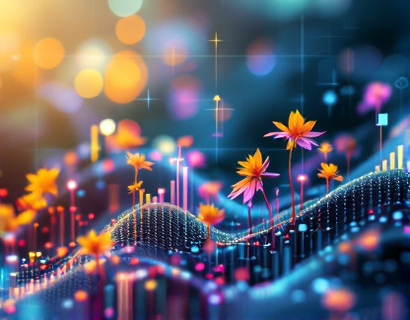Revolutionizing Aquaculture Businesses: The Power of Advanced Software Solutions
In the rapidly evolving world of aquaculture, business owners and managers face numerous challenges that can impact the success and sustainability of their operations. From managing complex supply chains to optimizing resource usage and ensuring compliance with regulatory standards, the demands are multifaceted. Advanced software solutions have emerged as a game-changer, offering a comprehensive suite of tools designed to streamline operations, boost productivity, and enhance overall efficiency. This article delves into the transformative impact of these software solutions, providing insights into how they can revolutionize the aquaculture industry.
Streamlining Operations with Integrated Software Systems
The core advantage of adopting advanced software solutions in aquaculture lies in their ability to integrate various aspects of business operations into a single, cohesive platform. This integration eliminates the need for disparate systems and manual data entry, reducing errors and saving valuable time. Key operational areas such as production management, inventory control, and financial tracking are seamlessly connected, allowing for real-time data access and analysis. For instance, a comprehensive software solution can track fish growth, monitor feed consumption, and manage water quality parameters all within one interface, providing a holistic view of the operation.
One of the primary benefits of integrated software is the enhancement of decision-making processes. With all relevant data centralized and easily accessible, managers can make informed decisions quickly. For example, real-time monitoring of water parameters can trigger alerts when conditions deviate from optimal levels, enabling prompt corrective actions. This proactive approach not only improves fish health and growth rates but also minimizes the risk of costly outbreaks and diseases.
Boosting Productivity through Automation and Optimization
Automation is a cornerstone of modern aquaculture software solutions, significantly boosting productivity by reducing manual labor and increasing efficiency. Automated feeding systems, for instance, ensure that fish receive the right amount of feed at the right times, based on factors such as water temperature, fish size, and growth stage. This precision feeding not only optimizes feed conversion ratios but also reduces waste, contributing to cost savings and environmental sustainability.
Additionally, software can automate routine tasks such as data logging, report generation, and inventory updates. This automation frees up staff to focus on more strategic activities, such as market analysis, business planning, and customer relationship management. By streamlining these tasks, aquaculture businesses can operate more efficiently, leading to higher productivity and better resource utilization.
Optimizing Resource Management for Sustainable Growth
Resource optimization is critical in the aquaculture industry, where water, feed, and energy are significant costs. Advanced software solutions provide powerful tools for managing these resources effectively. For example, water quality management modules can monitor and control parameters such as pH, dissolved oxygen, and ammonia levels, ensuring optimal conditions for fish health and growth. By maintaining ideal water conditions, businesses can reduce stress on the fish, leading to better growth rates and lower mortality rates.
Feed management is another area where software can drive significant improvements. By analyzing historical data and predicting future needs, software can optimize feed formulations and feeding schedules, reducing waste and lowering costs. Moreover, some solutions offer integration with feed suppliers, enabling automatic ordering and inventory management, which further enhances operational efficiency.
Energy management is also a key focus area. Software can monitor energy consumption in real-time, identifying patterns and areas for improvement. For instance, it can detect when pumps or aerators are running inefficiently and suggest adjustments to reduce energy usage. This not only cuts costs but also contributes to a more sustainable operation.
Enhancing Compliance and Regulatory Management
Compliance with environmental and regulatory standards is a critical aspect of running a successful aquaculture business. Advanced software solutions help ensure compliance by providing tools for tracking and managing regulatory requirements. These tools can generate necessary reports, monitor permit statuses, and alert managers to upcoming deadlines or changes in regulations. This proactive approach helps businesses stay ahead of compliance issues, avoiding potential fines and reputational damage.
Moreover, software can facilitate traceability and transparency, which are increasingly important in the global market. By maintaining detailed records of production processes, from feed sourcing to harvest, businesses can demonstrate their commitment to sustainable practices. This transparency can be a significant competitive advantage, attracting environmentally conscious consumers and partners.
Data Analytics for Strategic Insights
One of the most powerful features of advanced aquaculture software is its data analytics capabilities. By collecting and analyzing vast amounts of data, these solutions provide deep insights into various aspects of business operations. For example, production data can be analyzed to identify trends in fish growth, feed efficiency, and disease incidence. These insights can inform strategic decisions, such as optimizing breeding programs, adjusting feeding strategies, or investing in new technologies.
Market analysis is another area where data analytics shine. Software can integrate external data sources, such as market prices, consumer trends, and competitor activities, providing a comprehensive view of the market landscape. This information enables businesses to make informed decisions about production volumes, pricing strategies, and market entry or exit points. By leveraging data-driven insights, aquaculture businesses can stay agile and responsive to market changes, ensuring long-term success.
User-Friendly Interfaces for Seamless Adoption
For software solutions to be truly effective, they must be user-friendly and easy to adopt. Modern aquaculture software is designed with intuitive interfaces that require minimal training, allowing staff to quickly become proficient. Dashboards provide a clear and concise overview of key metrics, making it easy to monitor performance at a glance. Additionally, mobile accessibility ensures that managers can access critical information on-the-go, enhancing flexibility and responsiveness.
Customization is another important feature. Software solutions can be tailored to meet the specific needs of different aquaculture operations, whether they are focused on finfish, shellfish, or aquatic plants. This flexibility ensures that the software aligns with the unique challenges and goals of each business, maximizing its value and impact.
Case Studies: Real-World Success Stories
To better understand the practical benefits of advanced aquaculture software, let's look at a few real-world success stories. A large-scale finfish farm in Asia implemented a comprehensive software solution that integrated production management, feed control, and water quality monitoring. Within six months, the farm reported a 15% increase in fish growth rates and a 10% reduction in feed costs. The real-time data and alerts enabled the farm to address issues promptly, leading to improved fish health and higher yields.
Another example is a shellfish hatchery in Europe that adopted an advanced software system for hatchery management and quality control. The software's automated monitoring and reporting features helped the hatchery reduce larval mortality by 20% and improve the consistency of hatchery output. The enhanced traceability and compliance tools also helped the hatchery expand into new markets, where stringent quality standards were a requirement.
Future Trends: Embracing Innovation and Sustainability
The aquaculture industry is continually evolving, and software solutions are at the forefront of this transformation. Future trends include the integration of artificial intelligence and machine learning to further enhance predictive analytics and automation. AI can analyze complex data sets to identify patterns and make predictions, enabling even more proactive and precise management. For example, AI-driven models can forecast disease outbreaks based on environmental data and historical records, allowing for early intervention and prevention.
Sustainability remains a key focus, with software solutions increasingly incorporating eco-friendly practices and circular economy principles. Innovations such as closed-loop systems, where water and nutrients are recycled and reused, are being supported by software that optimizes these processes. This not only reduces environmental impact but also lowers operational costs, making aquaculture more viable and sustainable in the long term.
Additionally, the rise of remote monitoring and IoT (Internet of Things) devices is transforming how aquaculture operations are managed. Sensors and connected devices can transmit real-time data to the cloud, allowing for remote monitoring and control. This technology is particularly valuable for large or geographically dispersed operations, enabling centralized management and reducing the need for on-site presence.
Conclusion: The Path to Success in Modern Aquaculture
In conclusion, advanced software solutions are indispensable tools for aquaculture businesses looking to streamline operations, boost productivity, and optimize resource management. By integrating various aspects of business operations, these solutions provide a comprehensive platform for managing complex challenges and seizing opportunities. The real-world success stories and future trends highlight the transformative potential of technology in the aquaculture industry.
As the industry continues to grow and face new challenges, embracing advanced software solutions will be crucial for staying competitive and sustainable. Business owners and managers who invest in these technologies will be better positioned to achieve long-term success and thrive in a dynamic market.










































